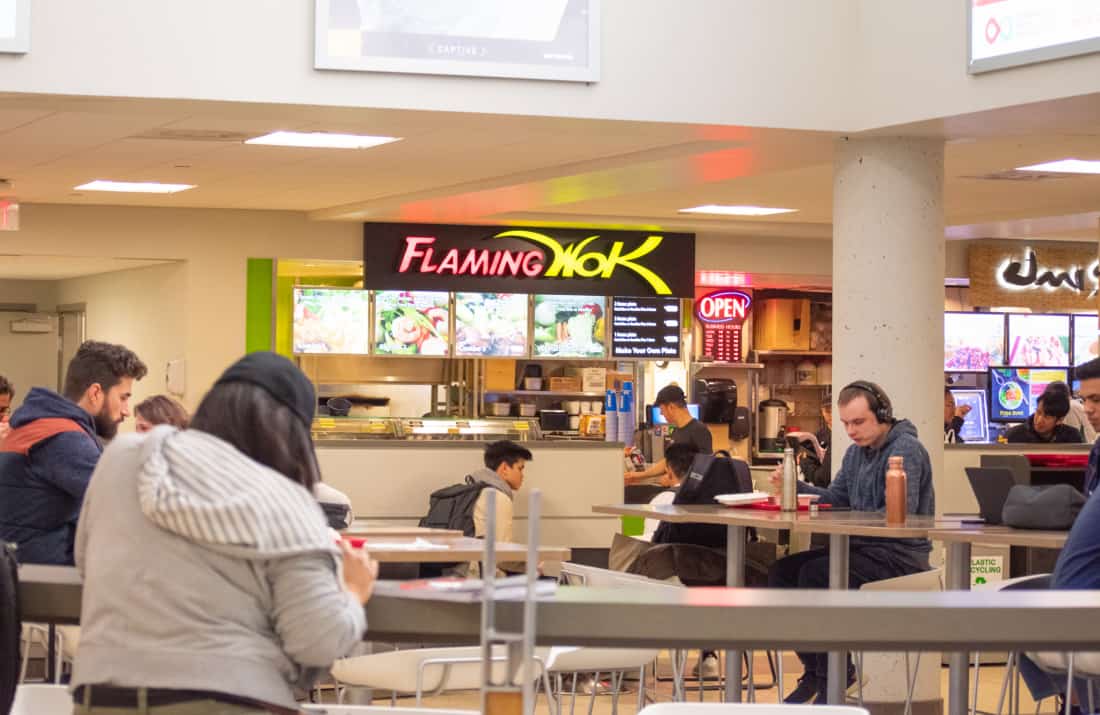
We’ve likely heard it all: “I want to eat healthier,” “I want to exercise more” or, better yet, “I wish I had a fast metabolism, then I could eat junk food all day.” These phrases infiltrate the minds of students every day.
When you get to university, you realize that now you have total control of your diet. So if mom and dad weren’t always the healthiest at home, now you can be. Or maybe at home, meals were always satiating and nutritious, but now you don’t know how to cook.
On top of that, you might not be as active as you were in high school. Where does that lead us? Weight gain. Stress and schoolwork don’t care about your weight. They’ll always be there, whether you’re a first-year or a seventh-year student up until 4 a.m.
So what is the university doing to help with this fear? Nothing. It’s not just the university though, it’s also society’s influence on our values. Just recently, there was an article written about someone having proposed an idea to replace the Sheaf with a McDonald’s.
Society has taught us to
de-value material resources and replace them with, what? Quarter pounders with cheese? What will last you longer? An article that provides you with information you can hold for a lifetime or a Big Mac with fries that gives you 1,146 calories and feelings of regret? You decide.
Another issue surrounding student’s nutrition is the food services offered on campus. While it can be argued that “everything is healthy in moderation,” there are limited healthy options for food on campus.
So what do you do when you need a quick bite because you’ve been on campus for 12 hours? You hit up the Lower Place Riel food court, where you’re instantly met with the smell of greasy pizza, fried chicken and Circle K hot dogs. It’s no wonder university weight gain is a reality.
The university provides us with minimal healthy meal options. Sure, there is Choices in STM that offers kale salads but for triple the price of a Circle K hot dog.
We might be in charge of our diets, but the majority of us are broke students who jump at the next sale of ramen and hot dogs. So on top of eating unhealthy and calorie-dense foods at home, we almost always choose the cheapest items at the university. The result?
If you have cereal for breakfast and grab your Tim Hortons or Starbucks fix, you are looking at over 400 calories. Have a mid-morning snack? For a granola bar, add 190 calories. At lunch, you want to get the most bang for your buck so you hit up the Flaming Wok. Now, no nutrition information is available but on average that sweet and sour pork and noodle one item plate will be roughly 700 calories.
A late afternoon snack of a Tim Hortons muffin is another 340 calories. Throw some “healthy” carrots and ranch dip? That ranch might cost you 200 extra calories. Supper hits and you are craving noodles so you boil up some ramen, a hot dog, top it with a slice of cheese — 850 calories, baby. But we aren’t done yet, are we?
Alternatively, if you start with half of a cup of oatmeal, a banana and peanut butter with a Tim Horton’s chaser, that’s 489 calories. At lunch, you have come prepared with a portioned meal of chicken and rice for around 500 calories.
Snack it up with raw veggies with lite ranch and a turkey sandwich for a healthy snack before you eat a healthy 500 calorie supper of portioned salmon and potatoes. Add a cookie, some fruit and cracker snacks later.
As you can see, the second option is healthier but it will also be more costly for your wallet. By not having cheap, healthy food options — other than the fruit in Upper Place Riel every week — students are increasingly finding it difficult to live a healthy lifestyle away from home.
All numbers on calorie counts came from myfitnesspal.com.
This op-ed was written by a University of Saskatchewan undergraduate student and reflects the views and opinions of the writer. If you would like to write a rebuttal, please email opinions@thesheaf.com.
—
Mitch Rohrke
Photo: Aqsa Hussain/ Layout Manager